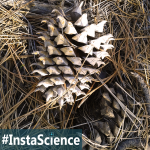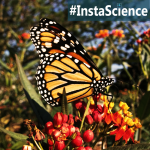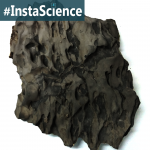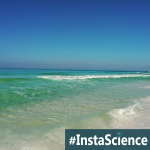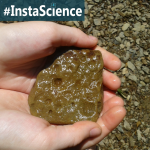Cones come in all shapes and sizes. These fruits of conifer trees are excellent subjects to study in the cooler months. But, did you know that there are both male and female cones? The male cone is typically soft, green, and small. In fact, many of us never even notice it, but it is very important. The male cone produces the pollen for the conifer tree and without it the seed would not be able … [Read more...]
Monarchs {InstaScience}
Listen to the InstaScience nature study: Every year around this time we head outdoors for a special treat - the monarch butterfly! I love butterflies, but the monarch is among my absolute favorites. This orange and black beauty is known as the “King of Butterflies.” Monarchs go through the same four stages in their life cycle as other butterflies, meaning that they begin as eggs, hatch … [Read more...]
Basalt {InstaScience}
We found this super strange looking rock in a creek on our property. It’s quite large and very hard. I hate to admit it, but I was stumped. I’m more of a lab rat than a rock hound. So like any good homeschoolers, we looked it up and found out that our large grey chunk was actually a piece of basalt! Basalt is an igneous rock that forms when molten rock is extruded out of the ground during a … [Read more...]
Ocean Waves {InstaScience}
There are very few things as peaceful as the sound of the ocean waves as they gently crest onto shore. It is a sound you can count on hearing every time you set foot in the beach. But what causes this to happen? Waves are the result of energy moving through the water. And there are two main causes for the waves we find on the beach. First as the wind moves over the surface of the water it … [Read more...]
Fossils {InstaScience}
We found this fossil of a shell a few years back as we were skipping stones in a local river. Luckily, our daughter turned her stone over and found the impression fossil. Now, the stone is a part of our ever-growing rock collection. Fossils are bits of plants or animals that have been preserved from the past. There are several different kinds of fossils based on how they are formed. The three … [Read more...]
Rain {InstaScience}
We have had a lot of rain so far this fall! Which is great for filling up the aquifers, but not so great for the colors of our leaves as I shared in last week’s InstaScience on fall leaves. Rain forms when warm, moist air rises and condenses to form a cloud of water vapor, the micro-droplets collect together to form bigger droplets which fall to the ground because of gravity. In other words, … [Read more...]
 Sign up below to receive weekly tips & tools for homeschool science and we'll send you a FREE copy of
Sign up below to receive weekly tips & tools for homeschool science and we'll send you a FREE copy of 